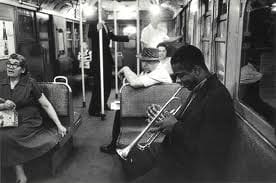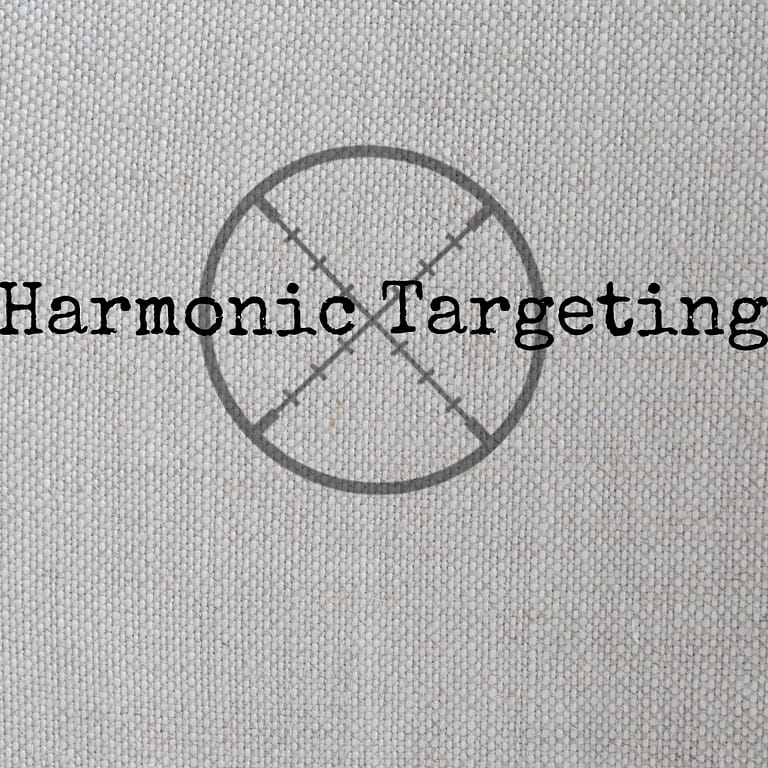Improv Tip Week #35-Listening on the Bandstand
Welcome to week #35 everyone! After last week’s tip on 3 different levels of listening and thinking about how important it is for us to open our ears and listen more…I wanted to talk about listening on the bandstand. All of the past tips have been things we actively work on when we’re in the woodshed, practice room or rehearsal. However, this week’s tip is something we can all do when we’re on the bandstand (the real application).
But, before we go into this week’s tip, I wanted to share some exciting information about an upcoming release. I will be releasing (in the next week or so) the Spanish version of my book, Targeting: Improvisation With Purpose. I’ve had a number of new friends from across the globe who’ve been requesting translated versions and the first of three translations (Spanish, French and German) will be available (in E-book format) very shortly. For those that are interested in the Spanish version (or English), you can click on the book to the left or go to “Books” tab above to get more information.
Listening on the Bandstand
One thing we have to remember as a musician is that it’s not all about us (unless you’re doing a solo gig, of course). We’re not the only one’s making music on the bandstand. Even as a soloist, the spaces we leave that are filled by the rhythm section become just as much a part of the improvisation as the notes we play. As a soloist, we can bounce ideas off the other musicians we are playing with to create someting truley spontaneous. You can tell when a musician comes with pre-canned or pre-determined ideas because they’re not interacting with the other musicians (see my post on Independence in Improvisation for more on that). If, as soloists, we get our ears open to what our bandmates are doing…we can take a performance in a new direction and have something fresh on our hands. That in turn makes for a more enjoyable experience for our audience. This doesn’t mean we come to our improvisation without having some plan of attack or that we completely rely on others to feed us ideas. There have been plenty of times (especially at jam sessions) where those that I’m playing with might as well be an accompaniment track. However, if you’re playing with musicians who give musical “suggestions” and you’re listening to them-you can take your improvisation in a direction that wasn’t pre-determined.
I love taking rhythms and patterns that my bandmates give me to create motifs or other ideas that lead us into an unexpected direction. Listen to what the drummer is doing with the snare/bass drum. Listen to the piano player (or guitar player) and the voicings and rhythmic comps they’re doing. Listen to the bass player…what can we grab from them? There are times where the rhythm section is reactionary…give them something to work with. Other times they’ll make musical suggestions. If it’s something your ears grab, then go explore that direction. If we know the song we’re playing (which we should if we’re on the bandstand) then going in a new direction shouldn’t be a major shock. The targets (guide tones and other topics discussed in previous tips) haven’t moved anywhere. You’re still playing the same song…but you are changing what you do with it (feel, rhythm, tempo, mood, etc). Ultimately, you’re the soloist and will determine the overall arc of the improvisation and if you’re going to play music with others or make it all about you.
I hope you’ve enjoyed this week’s tip! Please feel free to share this tip and site with your friends, colleagues and students via Facebook, Twitter, Google+, etc or any other site you’re a contributor for. For your convenience, there are a few buttons below for quick sharing access. I’d love to hear your thoughts on this as well. Do you listen to others on the bandstand or do you prefer to set the tone/direction 100% of the time? Either way…I hope to see you back next week!




Fabulous! Thank you, Jason!
It’s great to hear a fellow musician articulate what I try to tell my students, cause then they’re getting the same info from someone other than me, and it sort of validates my point.
I wrote an eBook called, “Get Off The Bandstand” and it’s all about the collaboration that jazz is, and that the singer is not there to
showcase him/herself but to LISTEN and be a part of the band, and that means moving off to the side when the guys are soloing, not standing there smiling at someone in the crowd just to keep the attention on him/herself. My old friend Barney McClure calls that “rude stage manners”.
Really enjoyed this post!!
Thanks for sharing Chrys! I’ll have to check out your book. Do you have a link that you could share for everyone?
Actually yes! And I’m glad to do so, thank you. If you go to my website, http://www.singyourlife.com/for_members_only.htm
it’s #14 at the bottom of the page.
Thanks for the interest!
Chrys